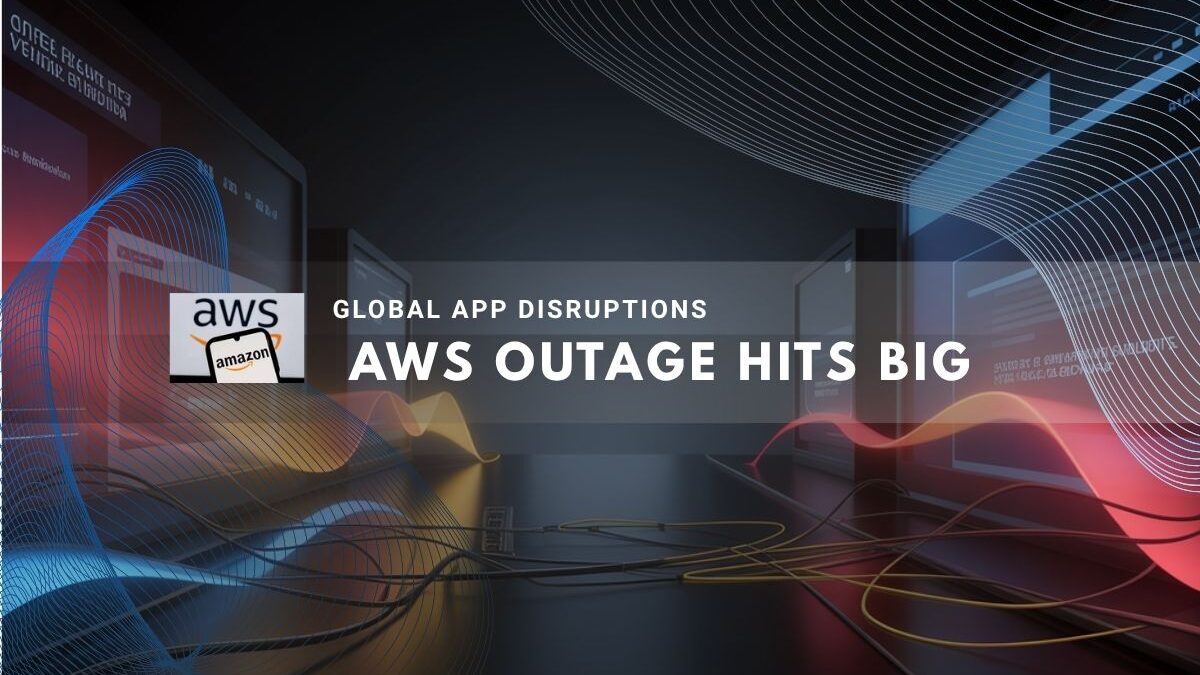Amazon Web Services (AWS), the world’s largest cloud computing provider, experienced a significant outage on Monday, October 20, 2025. The disruption originated from AWS’s US-EAST-1 data center in northern Virginia, its largest and oldest cloud region, which has previously faced outages. This issue caused widespread service interruptions affecting thousands of websites and applications globally, highlighting the risks of dependency on a few cloud infrastructure providers.[5][9]
Wide-Ranging Impact on Major Digital Platforms and Services
The outage affected a broad range of services across social media, gaming, financial technology, government platforms, and more.
- Popular social apps such as Snapchat, Reddit, Roblox, and Duolingo faced disruptions.
- Financial and trading platforms including Coinbase and Robinhood reported outages.
- Amazon’s proprietary services like Prime Video, Alexa, and Amazon Music were intermittently down.
- Gaming services such as Fortnite and ride-sharing apps like Lyft experienced connectivity issues.
- Government sites including the United Kingdom’s HM Revenue and Customs had accessibility problems.
Millions of users reported problems, with Downdetector registering over 6 million outage reports spanning approximately 500 services worldwide at the peak.[1][9][5]
Technical Details and Timeline of AWS Service Failures
The disruption began early Monday morning around 12:11 a.m. Eastern Time. AWS acknowledged elevated error rates primarily tied to DynamoDB, its managed NoSQL database service, in the US-EAST-1 region. The issues caused increased latency and service failures for many AWS-dependent applications.[4][1]
Efforts to mitigate the outage included limiting request volumes to stabilize the affected systems. AWS engineers promptly engaged to diagnose and address the problem. By midday, a gradual restoration was underway, though some services persisted with intermittent problems.[9][5]
Underlying Causes, Security Considerations, and Industry Implications
AWS has not disclosed a definitive root cause but indicated the technical fault likely involves networking and database management systems within the US-EAST-1 region. There is no evidence to date suggesting a cyberattack triggered the outage.
This event underscores systemic vulnerabilities inherent to centralizing digital infrastructures among a small number of providers. Even localized issues can cascade to affect millions of users across a spectrum of industries and national regions, from finance to government services.[4][5][9]
Context within Broader Technology Infrastructure Landscape
This AWS outage ranks among the largest internet disruptions in recent memory, akin to last year’s CrowdStrike failure that affected hospitals, banks, and airports globally. Holding about a third of the global cloud market share, AWS represents a backbone of internet infrastructure. Events like these reinforce the urgent need for diversified, resilient cloud strategies across businesses and governments.[11][5]
Recommendations for Organizations and End Users to Mitigate Risks
- Review and enhance disaster recovery and business continuity plans focusing on cloud infrastructure outages.
- Explore cloud service diversification and multi-cloud architectures to reduce reliance on a single provider.
- Monitor official sources like the AWS Health Dashboard for real-time service status.
- Communicate transparently with customers during outages to maintain trust.
- Educate end users about potential service interruptions originating from cloud dependencies.
Important Notice on Ongoing Investigations and Future Updates
At the time of publishing, AWS investigations continue with no confirmed detailed root cause. Readers should consult official AWS status pages regularly for the most current information on service health. This article will be updated accordingly as new, verified information becomes available to ensure accuracy and transparency.
